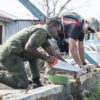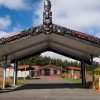By J. Martin
The NZ Army collective combined-arms capability must meet the Government of New Zealand’s (GoNZ) directed outputs as expressed in the NZDF Output Plan. The pre-Op PROTECT approach to the generation of the NZ Army’s combined arms-capability was centred around a cyclical 1(NZ) Bde Campaign plan which did not align with strategic and operational direction, nor effectively utilised limited resources to develop operational excellence. NZ Army’s collective combined-arms capability should be regenerated by directing standing combined-arms tasks to 1(NZ) Bde’s manoeuvre units that clearly align with strategic and operational direction. This tightened focus would drive operational excellence through better allocation of resources, effective use of resources and training opportunities and an enhanced sense of unit and sub-unit purpose.
The GoNZ’s defence expectations are outlined in the Strategic Defence Policy Statement 2018 and the NZDF Output Plan. Two principal roles of the Defence Force are pertinent to the NZ Army’s combined-arms capability: “Conduct a broad range of operations in the South Pacific, including leading operations …” and “Make a credible contribution in support of peace and security in the Asia-Pacific region…”[i] The NZDF Output Plan 20/21 directs the NZ Army to field a Task Group capable of coalition-led operations including Global Land Combat or a Task Group capable of independent stabilisation operations in South Pacific; and a high-readiness land combat capability[ii].
The NZ Army’s collective combined-arms capability is delivered within the framework of the Multi-Role Battalion Group[iii] and includes a Light Infantry based Task Group (Lt Inf TG), a Light Armour based TG (Lt Armr TG) and a High Readiness Task Unit (HRTU)[iv]. The Lt Inf TG must be able to conduct “sustained independent operations”[v] – which the NZ Army is only required to lead in the South Pacific. The Lt Armr TG must be able to conduct Joint Land Combat as part of coalition led operations[vi]. The HRTU must be able to “conduct short-duration, rapid…deployment into the SW Pacific AOR” and conduct operations “up to and including population protection” [vii]. These two TGs, and one TU, is the collective combined-arms capability that 1(NZ) Bde is directed to deliver.
The pre-Op PROTECT 1(NZ) Bde campaign plan was based around the three 1(NZ) Bde manoeuvre units generating a ‘lead’ TG on a triennial rotation. Generating three TG HQs creates an unachievable burden on staffing, combat support (CS) and combat service support (CSS) elements. By rotating ‘lead’ TGs 1(NZ) Bde is unable to align long-term training and resourcing to an operational focus aligned with strategic direction. The immediate focus often becomes a specified exercise which may not align with the TG capabilities (such as a Lt Inf TG operating in a coalition-led, armoured exercise). This lack of a clear long-term purpose for manoeuvre units and their supporting CS and CSS elements diminishes operational effectiveness. Training must cover an impossibly wide set of environments, with a resulting constant battle to maintain all-encompassing basic skills as opposed to operational excellence in a defined environment.
Post Op-PROTECT the NZ Army should approach the regeneration of it’s collective combined-arms capability by directing standing unit outputs that align with strategic direction. 1(NZ) Bde should maintain two TGs optimised for defined outputs, and a third unit comprising the HRTU and another TU optimised for land combat. QAMR should maintain a standing Lt Armd TG, lead the initial deployment on global (less the SW Pacific) TG operations and focus on population protection and land combat. 2/1 RNZIR should maintain a standing Lt Inf TG, lead the initial deployment on TG operations in the SW Pacific and focus on population support and population protection in the SW Pacific. 1 RNZIR[viii] should maintain the HRTU and a second TU focused on global land combat and be prepared to deploy, with a National Command Element as necessary, for the full range of TU operations.
Generating a combined-arms capability by establishing two standing TGs would allow for more efficient allocation of personnel. The NZ Army aspires to maintain a deployed TG for up to 36 months[ix], but it is acknowledged that the third rotation would have significant staffing shortfalls[x]. The NZ Army does not possess the staffing for three deployed HQ yet we attempt to rotate personnel through three TG HQs in New Zealand. To compound this issue we rotate the ‘lead’ TG most years, unaligned with the two year posting cycle leading to avoidable staff turnover and competition for personnel. Instead, we could fully staff two deployable TG HQs reducing staff turnover and increasing operational effectiveness. CS and CSS units could forecast their likely personnel support requirements and manage competing priorities. We could guarantee operational effectiveness for two of the three TG HQs required for a three rotation deployment and provide a 12-18 month window to mobilise the third TG HQ.
Generating a combined-arms capability by directing two units to provide operationally focused TGs, and a third unit to provide two TUs, would permit clearer resource allocation. The C4 (command, control, communications and computers) for a deployable TG would only need to be provided to two units. Individuals’ Scale of Entitlements could be adapted based on their operational focus. The CSS holdings for each unit and the likely requests to centrally managed CSS resources could be refined and less competitive. CS and CSS units could forecast their likely resource support requirements and better manage competing priorities. A clearer need for resources, based on standing operational outputs, would lead to more effective resource utilisation.
To complement this effective resourcing, the NZ Army’s collective combined-arms training could be more focused, leading to increased operational effectiveness. International and collective training could be linked to directed outputs with 1RNZIR providing TUs to Ex Southern Katipo and appropriate land combat exercises (such as the Joint Readiness Training Centre), QAMR leading the biennial contribution to Ex TALISMAN SABRE and 2/1 RNZIR leading the TG contribution to Ex Southern Katipo. Inter-unit training opportunities could be prioritised against directed outputs with aligned Directed Level of Capability assessments. Intra-unit training could focus on training to enhanced standards against directed operational outputs. Saved time could be reinvested into introduction into service of operationally relevant capabilities and future focused training – as opposed to maintaining basic currency in all operational environments.
Tying the generation of the NZ Army’s combined arms capability to standing unit outputs would enhance the sense of purpose for respective unit personnel. Currently, outside of the HRTU, the directed outputs of the manoeuvre units cannot be easily linked to operationally focused training. This creates a sense that the training is being conducted for the sake of training and provides little tangible purpose or desire to be excellent. However, if your unit is the NZDF’s lead for a TG deployment to the Middle East, or your sub-unit is lead for a contribution to an ADF Battlegroup, you have a clear training purpose. This provides the moral imperative to be excellent in your defined operational output.
There are risks to this regeneration approach. There may be the perception that 1 RNZIR, as the “non-TG” unit, is of lesser importance than QAMR or 2/1 RNZIR. This can be mitigated by emphasising that they are lead for TU deployments (the norm for the NZ Army in the last 15 years), and is outweighed by the increased sense of purpose throughout the three units. The other risk is that certain skills atrophy when left dormant in units. This is mitigated through comprehensive BLOC training at TAD and CCT and by organisational maintenance of all skills.
Post Op-PROTECT the regeneration of the NZ Army’s collective combined-arms capability should be approached in order to enhance operational effectiveness. The three manoeuvre units of 1(NZ) Bde should deliver standing TG or TU outputs aligned to strategic direction. QAMR should deliver a Lt Armd TG optimised for global land combat, 2/1 RNZIR should deliver a Lt Inf TG optimised for population support in the SW Pacific and 1 RNZIR should deliver two TUs – the HRTU for rapid deployment in the SW Pacific and another TU for global operations. These standing outputs could be properly resourced and staffed, and competing CS and CSS support requirements could be clearly prioritised. These properly staffed and resourced TGs and TUs could then focus collective and individual training on defined outputs, strive for mastery of their domain and a impart of clear sense of purpose on their members.
Footnotes
[i] Government of New Zealand Strategic Defence Policy Statement 2018 (Wellington: Ministry of Defence, 2018), p. 8.
[ii] NZDF Output Plan FY 2020/21 (Wellington: Headquarters New Zealand Defence Force, 2020), p. 19-20.
[iii] Chief of Army Command Directive (Wellington: Army General Staff, 2020) , p. A-1-1.
[iv] Land Component Commanders Directive (Upper Hutt: Headquarters Joint Force New Zealand, 202), p. E2-E3.
[v] Ibid, p. E2.
[vi] Ibid, P. E3.
[vii] Ibid.
[viii] 1 RNZIR’s proximity to RW, Amrd and OS assets make it better suited to diverse sub-unit roles than 2/1 RNZIR.
[ix] Chief of Army Command Directive (Wellington: Army General Staff, 2020) , p. A-1-1.
[x] NZDF Annual Report 2020 (Wellington: Headquarters New Zealand Defence Force, 2020), p 91.






